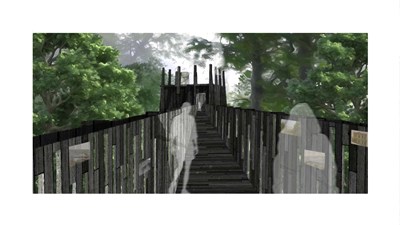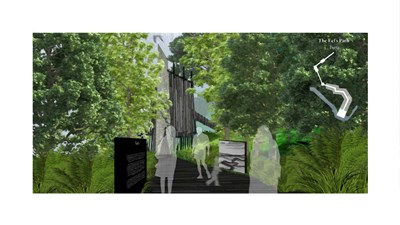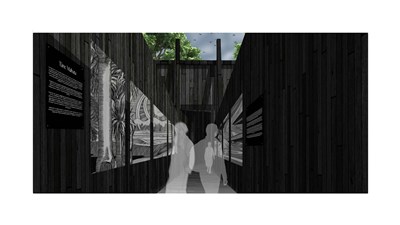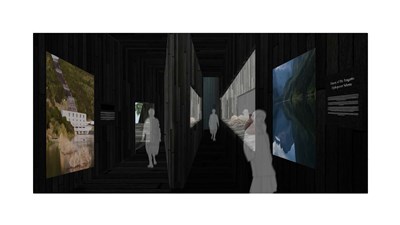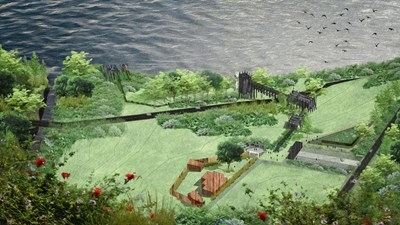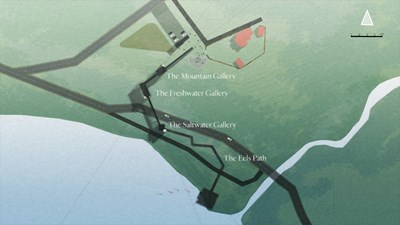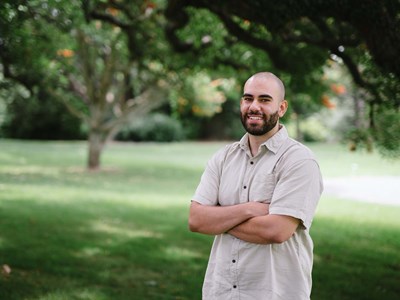Khamis Shiblaq of Te Whare Wānanga o Wairaka, Unitec, School of Architecture is a finalist for his project 'Museum of Water'.
Project description
This project began by exploring New Zealand's ongoing freshwater crisis and recognising the need for a change in how we view water. Water museums worldwide are actively working to help educate the public on different forms of humankind’s connections with water. They call on people and institutions to implement urgent actions to repair our deteriorated relationship with Earth’s most precious element.
In Aotearoa, we are lucky enough to have a river with a voice of its own, Te Awa Tupua (The Whanganui River), the first river in the world to be granted personhood status. The project explores the design of a water museum located in the native township of Pīpīriki, situated along the banks of the river. The museum preserves and showcases the tangible and intangible aspects of Te Awa Tupua - while symbolically remembering its history of colonial transgressions. The strength, spirit and identity of Whanganui iwi all stem from the river. The project celebrates this unique connection between man and water, using it to drive many of the projects design decisions. Te Awa Tupua inspires the culture shift that New Zealand's freshwater is in dire need of, as visitors leave the museum, they carry with them a new understanding of water, inspired by wairuatanga.
Early Whanganui Māori would use fishing structures called Pa tuna, Pa Piharau, and Tararua for fishing Tuna and Piharau - upon the arrival of early European settlers, these structures were destroyed to make way for steamboat travel, destroying with them an integral portion of Whanganui Iwi culture. The project seeks to commemorate these destroyed fishing weirs by taking inspiration from the stakes in the weir fences. The museum also orientates itself towards Matua Te Toa Tongariro (Mount Tongariro) and Te Tai-o-Rehua (Tasman Sea) - referencing the principle that Te Awa Tupua is an indivisible and living whole from the mountain to the sea.
Jury citation
Kaua e kōrero mo te Awa, me kōrero ki te Awa.
Do not merely speak of the River, speak instead to the River.
This detailed project explores the idea of a water museum located in the township of Pīpīriki, situated along the banks of Te Awa Tupua (the Whanganui River), an 'indivisible and living whole from the mountains to the sea, incorporating the Whanganui River and all of its physical and metaphysical elements' who was recently acknowledged through the Te Awa Tupua (Whanganui River Claims Settlement) Act 2017 with legal personhood. New Zealand’s freshwater pollution crisis was a catalyst for this project, and Khamis has delved deep into the issues surrounding the politicisation of water in this country, and the commercial interests that are destroying its fragile structures and ecosystems.
This Museum of Water aims to illuminate the whakapapa of Te Awa Tupua, and educate the public about the stories of its waters, the threats facing it today, and its colonial history, which includes New Zealand’s longest running legal dispute between Whanganui iwi and the Crown. These stories are contained within a humble yet beautiful museum architecture that is designed with strong ties to the landscape; the structures are oriented towards Matua Te Toa Tongariro (Mount Tongariro) and Te Tai-o-Rehua (Tasman Sea).
This courageous project asks all the right questions and the result is an architecture that has the potential to create a ripple effect that influences hearts and minds in Aotearoa. Khamis’s care, research, and clarity of presentation have resulted in a heartfelt and thought-provoking outcome.




